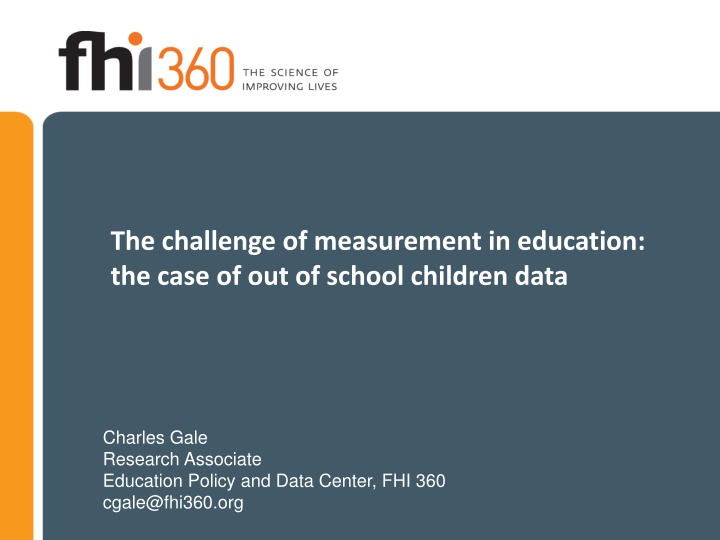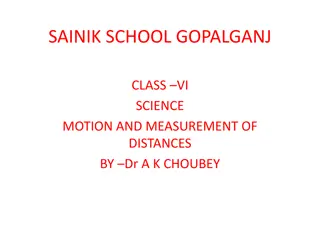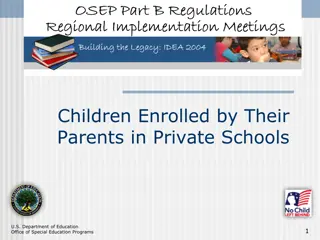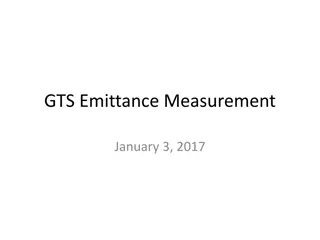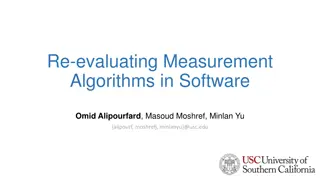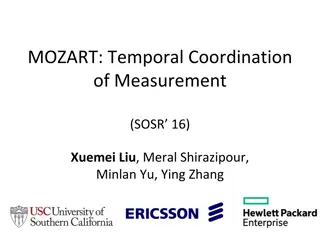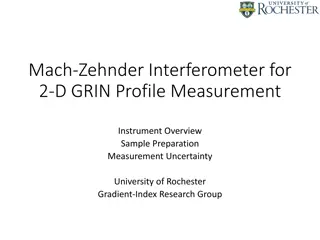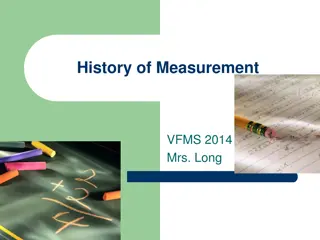Challenges of Measurement in Education: Out-of-School Children Data
This content discusses the measurement challenges in education focusing on out-of-school children data, including issues with data collection methods, discrepancies between surveys and administrative sources, and the global initiative on out-of-school children. Various images and figures illustrate the extent of out-of-school children and data analysis gaps in primary education.
Uploaded on Mar 14, 2025 | 1 Views
Download Presentation

Please find below an Image/Link to download the presentation.
The content on the website is provided AS IS for your information and personal use only. It may not be sold, licensed, or shared on other websites without obtaining consent from the author.If you encounter any issues during the download, it is possible that the publisher has removed the file from their server.
You are allowed to download the files provided on this website for personal or commercial use, subject to the condition that they are used lawfully. All files are the property of their respective owners.
The content on the website is provided AS IS for your information and personal use only. It may not be sold, licensed, or shared on other websites without obtaining consent from the author.
E N D
Presentation Transcript
The challenge of measurement in education: the case of out of school children data Charles Gale Research Associate Education Policy and Data Center, FHI 360 cgale@fhi360.org
Number of out of school children, primary ages, 2011 (UIS Data Centre, accessed February 2, 2014) 2011 figure available No 2011 figure available Map created using Stat Planet (http://www.statsilk.com/)
Overview - data gaps and EFA goal 2 Source: 2013 GMR
Overview How many primary-aged children are out of school? primary-aged children are out of school? How many School coverage Variation in primary Data source Administrative Household survey Across countries Within countries Over time Private providers Pre-primary
How many primary-aged children are out of school? Data source Administrative Household survey
Out of school rate, primary, administrative vs. household survey sources 70 62 56 60 54 Survey Admin 50 48 42 44 44 41 40 37 34 % 32 32 30 24 23 23 20 17 17 13 13 13 1111 11 10 9 9 7 4 7 1 2 5 4 2 1 0 Sources: UIS, Demographic and Health Surveys (DHS), and Multiple Indicator Cluster Surveys (MICS) * ISCED 1 definition of primary
Effect of India discrepancy between survey and administrative sources on global total of OOSC, primary 90 80 76.5 (UIS+HHS) India, difference between HHS and admin 70 68.2 (UIS) 60 50 millions 40 30 20 10 0 Source for global totals UIS Data Centre (accessed 2/16/2014) Source for difference: EPDC (2013)
Global Initiative on Out of School Children It should be noted that there is no one correct figure on out-of-school children. The numbers of OOSC from household survey data analysis and administrative data indicate the range of numbers of OOSC in a country (UIS-UNICEF, 2014)
How many primary-aged children are out of school? Variation in primary Across countries Within countries Over time
ISCED 1 compared to national primary durations ISCED 1 (1997) Country durations (where different from ISCED) 15 14 13 12 Childage 11 10 9 8 7 6 5 Pakistan Brazil Nigeria Uganda India Kenya Ethiopia Source: UNESCO International Bureau of Education (IBE)
Primary duration and entry ages, India, state compared to national Primary Entry age Primary Duration Primary Age Range % OOS local ages % OOS ages 6-10 State or U/T Goa 5 4 5-8 15% 4% Kerala 5 4 5-8 7% 1% Maharashtra West Bengal 5 5 4 4 5-8 5-8 18% 26% 9% 16% Orissa 5 5 5-9 15% 14% Punjab 5 5 5-9 20% 12% Sikkim 5 5 5-9 33% 20% Uttar Pradesh 5 5 5-9 28% 20% Source: International Bureau of Education (IBE), EPDC extraction of DHS dataset
Number of out of school children, primary age, Burkina Faso 1,400,000 1,200,000 1,032,931 (2010) 1,000,000 800,000 884,687 (2009) 600,000 400,000 200,000 0 1999 2001 2003 2005 2007 2009 2011 Source: UIS Data Centre (accessed 2/2/2014)
How many primary-aged children are out of school? School coverage Private providers Pre-primary
Enrollment in unregistered schools, Kenya Source: APHRC (2008)
Pre-primary attendance by age, Kenya 100 75 in pre-school out of school 50 25 28 11 6 2 9 7 4 3 - 6 7 8 9 10 11 12 13
Recommendations Improve timeliness of data or adjust for time trends 80.0 66.9 70.0 60.0 50.0 40.0 27.3 25.6 30.0 15.4 20.0 10.0 0.0 Banladesh 1990 UIS Bangladesh 2011 DHS DRC 1999 UIS DRC 2010 MICS Note: UIS estimates were current at time of publication
Recommendations Streamline basic definitions Household survey as alternative source for out of school children numbers Measuring school exclusion for standard age cohort such as 7-14 Ages 7-14 Official primary ages 80 71.7 66.2 70 60 50 40 25.6 24.4 30 20.4 16.0 13.4 20 7.8 10 0 Ghana, DHS 2008 Congo (DRC), MICS 2010 Sudan, South, IPUMS Census 2008 Kenya, DHS 2009
Recommendations Build a broad understanding of data quality concerns
References Education Policy and Data Center. (2013). Out of school children: Data challenges in measuring access to education. Washington DC: FHI 360. Oketch, M., Mutisya, M., Ngware, M., Ezeh, A., & Epari, C. (2008b). Pupil school mobility in urban Kenya (APHRC Working Paper No. 38). Nairobi: African Population and Health Research Center. UIS. (2010). Measuring educational participation: Analysis of data quality and methodology based on ten studies. Montreal: UIS. UIS Data Centre. Accessed at uis.unesco.org on 2/5/2014. UIS & UNICEF. (2005). Children out of school: Measuring exclusion from Primary education. Montreal: UIS.
References UIS & UNICEF. (2014). Global Initiative on Out of School Children. South Asia Regional Study. Kathmandu: UNICEF. UNESCO. (2012). Youth and skills: Putting education to work. Education for All Global Monitoring Report 2012. Paris: UNESCO. UNESCO. (2013). Teaching and learning: Achieving quality for all. Education for All Global Monitoring Report 2013. Paris: UNESCO.
Thank you! Contact: cgale@fhi360.org
